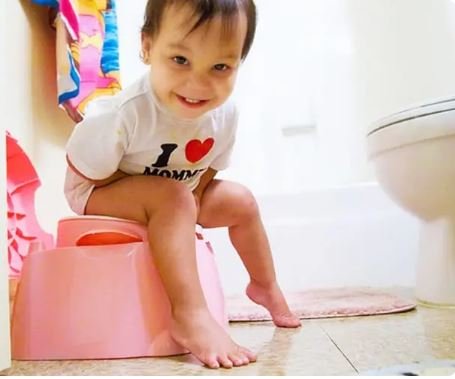
Potty training is a significant milestone in every child’s development, but it can be a challenge for parents. With patience, consistency, and the right approach, you can make potty training easier for both you and your child. This step-by-step guide will walk you through the process, helping your little one master this important skill.
1. Know When Your Child Is Ready
Every child is unique, and readiness for potty training varies. Most children are ready between 18 to 36 months, but there’s no universal timeline. Look for signs of readiness before beginning the training process.
Signs Your Child Is Ready:
- Stays dry for at least 2 hours during the day.
- Shows interest in the bathroom or asks to wear “big kid” underwear.
- Can follow simple instructions and communicate their needs.
Starting when your child shows these signs of readiness will make the process smoother and less stressful.
2. Choose the Right Potty
Before you begin, it’s essential to pick a potty that your child will feel comfortable using. Some parents opt for a child-sized potty, while others choose a potty seat insert for the regular toilet.
Choosing the Right Potty Tips:
- Let your child help pick out their potty to build excitement.
- Ensure the potty is easy to use and comfortable for your child’s size.
- Keep it in a convenient location, like the bathroom, where your child can access it easily.
The right potty encourages your child to participate and feel more in control of the process.
3. Establish a Routine
Consistency is key when it comes to potty training. Start by establishing a regular potty routine that your child can follow.
Creating a Potty Schedule:
- Encourage your child to use the potty at specific times, such as after meals, before naps, or when they wake up in the morning.
- Use reminders gently, asking your child if they need to go without pressure.
- Praise attempts, even if they don’t succeed at first.
Following a consistent schedule helps your child understand when it’s time to use the potty and creates positive habits.
4. Use Positive Reinforcement
Positive reinforcement goes a long way in potty training. Celebrate successes and avoid punishment for accidents.
How to Use Positive Reinforcement:
- Offer praise, high-fives, or small rewards when your child uses the potty.
- Create a potty chart and give them stickers each time they succeed.
- Stay patient and encouraging, even during setbacks.
Rewards and positive attention motivate your child to continue their progress and make the process feel rewarding.
5. Handle Setbacks with Patience
Accidents are a normal part of potty training, especially in the early stages. Handle setbacks with patience and understanding.
What to Do When Accidents Happen:
- Avoid scolding or punishing your child for accidents.
- Calmly clean up and remind them to use the potty next time.
- Stay consistent with the routine, even if there are setbacks.
By handling accidents with patience, your child will feel less pressure and be more willing to continue learning.
6. Transition to “Big Kid” Underwear
Once your child consistently uses the potty, consider transitioning from diapers to “big kid” underwear. This change helps reinforce their independence.
Making the Transition:
- Let your child choose their favorite underwear to make it exciting.
- Explain that “big kid” underwear means fewer accidents and using the potty.
- Use nighttime pull-ups or training pants if necessary but focus on daytime potty success.
Transitioning to underwear is a great way to boost your child’s confidence and solidify their progress.
7. Nighttime Training Tips
Daytime potty training usually happens before nighttime success. For many children, staying dry overnight takes longer, and that’s perfectly normal.
Tips for Nighttime Training:
- Limit fluids before bedtime to reduce the chance of accidents.
- Wake your child once at night to use the potty if necessary.
- Use waterproof mattress protectors for easy cleanup.
Nighttime training often takes more time, but staying consistent with your daytime potty routine will help.
Conclusion
Potty training doesn’t have to be stressful. By following these simple steps—knowing when your child is ready, choosing the right potty, establishing a routine, and using positive reinforcement—you can make the process smoother. With patience, consistency, and encouragement, your little one will be potty-trained in no time!
